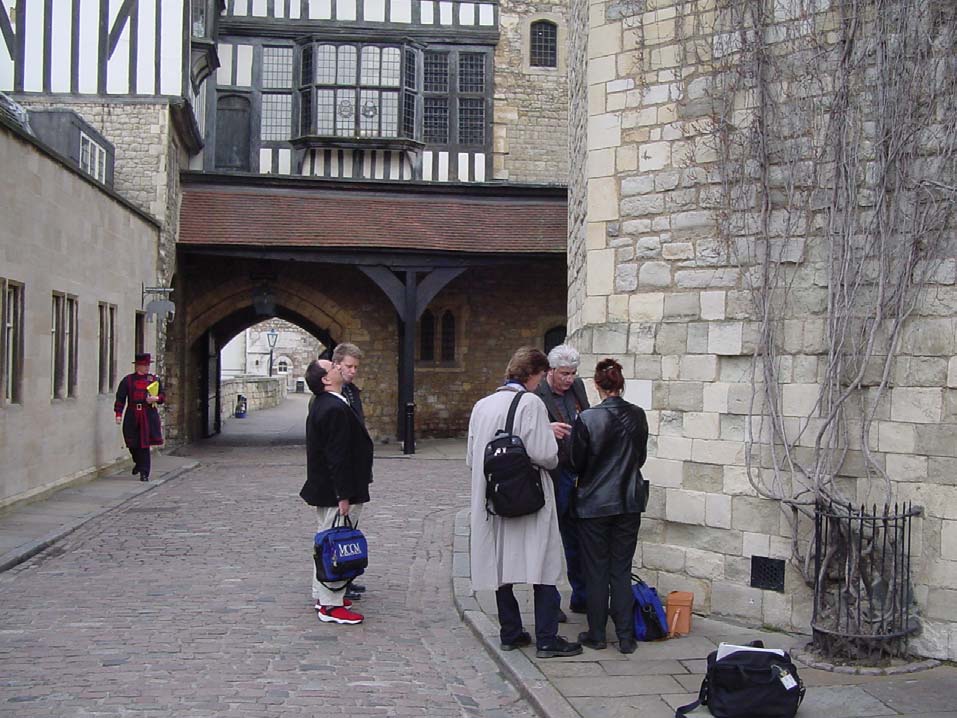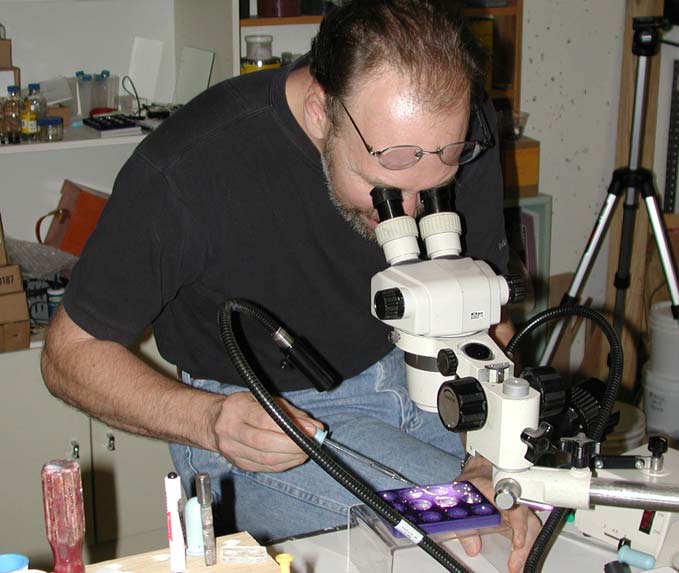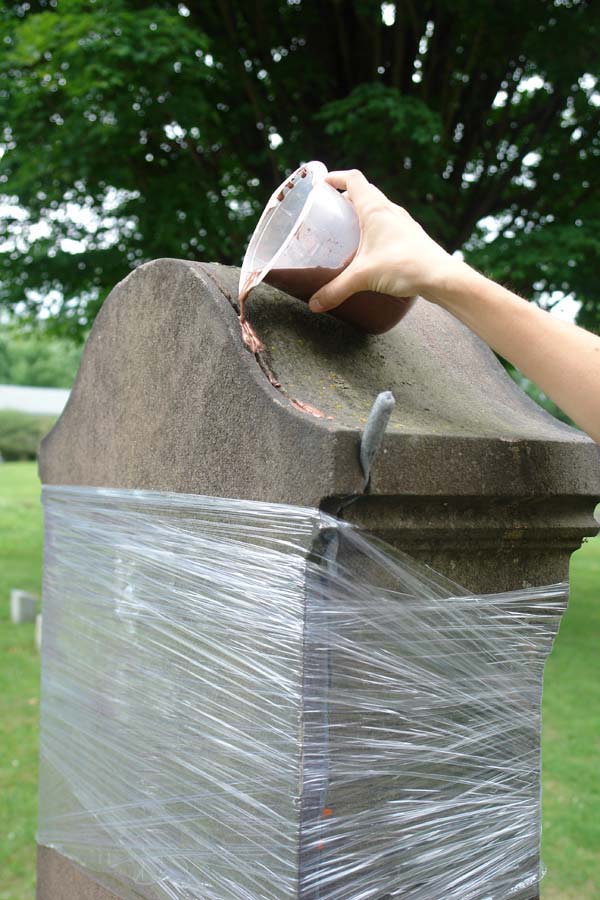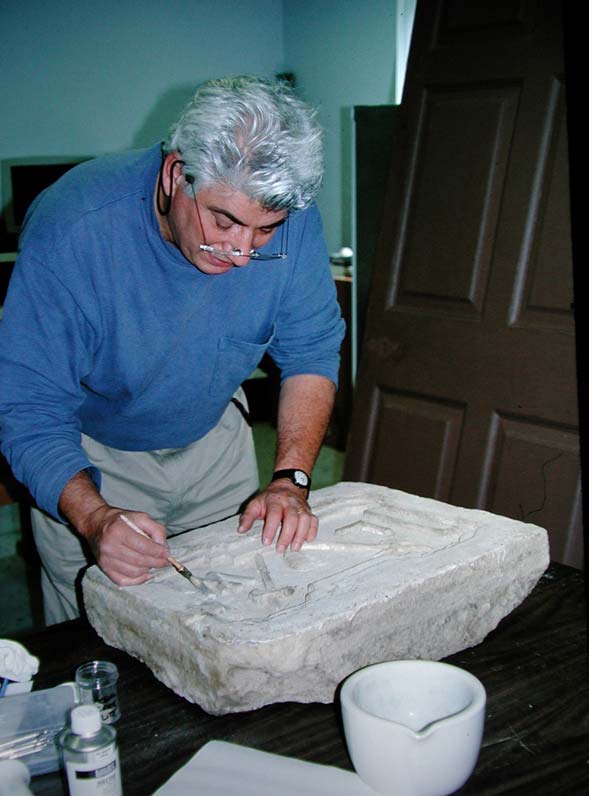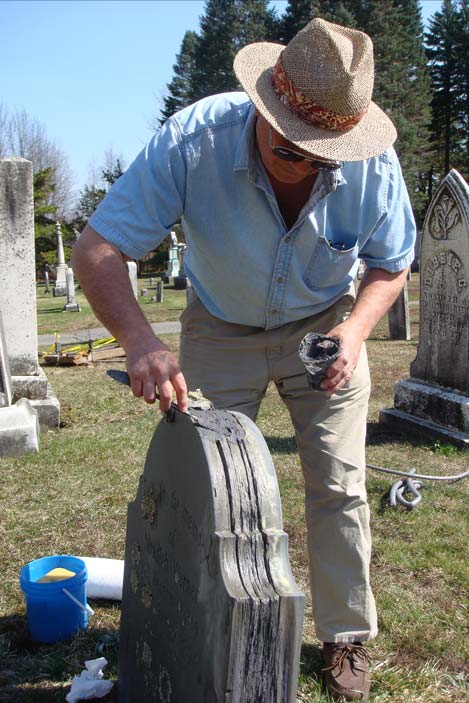
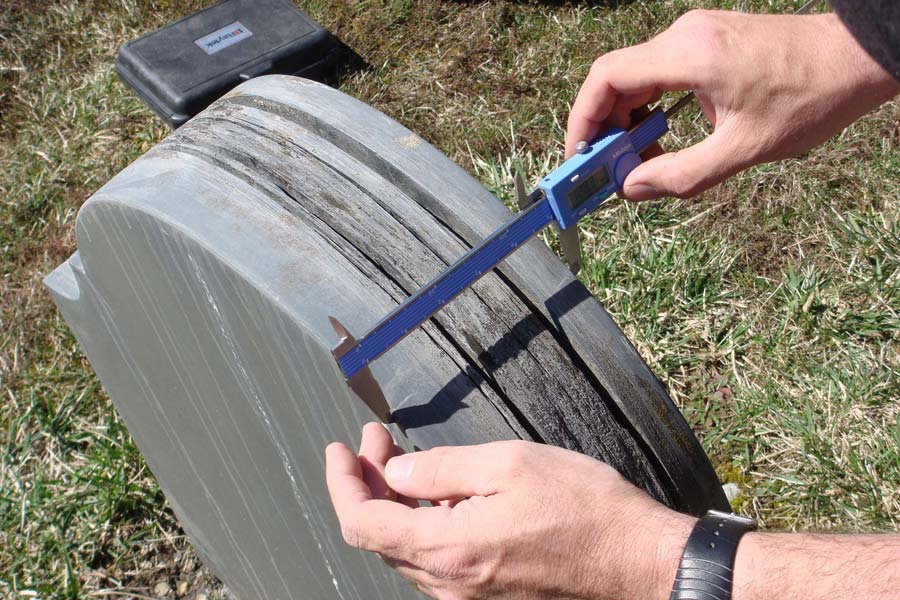 The successful filling of voids in slates is one of the more challenging aspects of stone conservation.
The successful filling of voids in slates is one of the more challenging aspects of stone conservation.
In strong sun, these stones can get too hot to touch; and any delaminated areas tend to expand as the temperature rises.
We have had ongoing field tests for a number of years with good results.
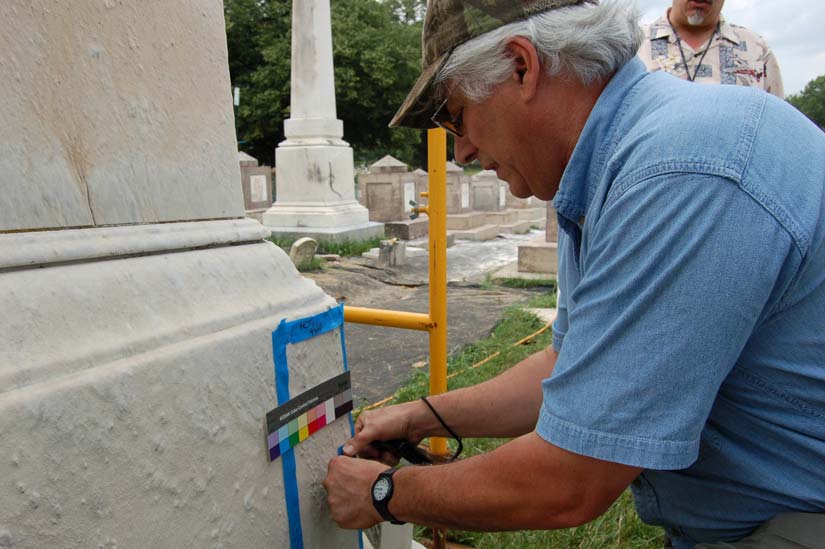
Field testing the results of HCT consolidation treatment on marble.
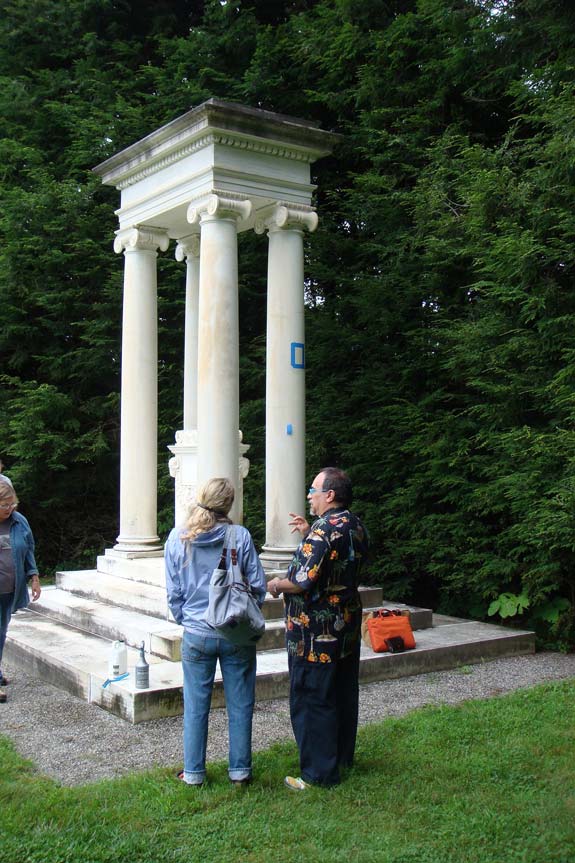
Cracks and losses are filled with cementitious mortars pigmented to match the clean stone. Occasionally the fills are in-painted to match the surface color.

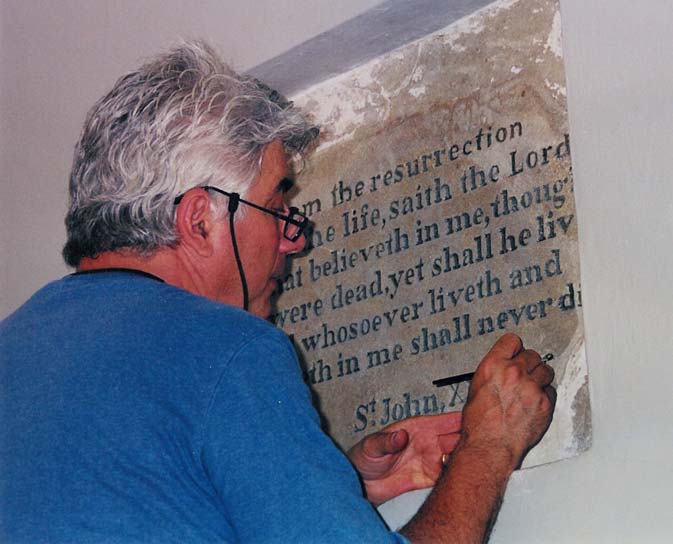
Filling a void in a brown sandstone marker caused by delaminations. A super plasticizer was used to make the pigmented mortar flowable. Backer rod is used to fill the sides. On large voids, this procedure has to be done in “lifts”
In-painting filled crack. “LW” cornerstone.
Mount Vernon, VA
Field application of stone samples placed in mock wall. Hampton Court Palace, Richmond upon Thames, England
Using ultrasound pulse velocity to determine soundness of stone before and after treatment.
